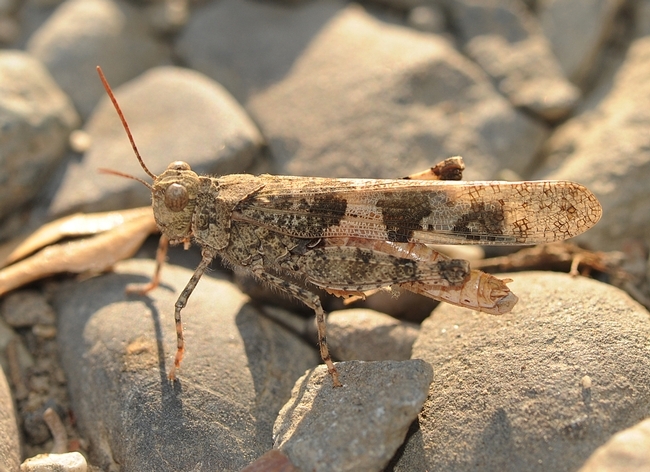- Author: Kathy Keatley Garvey

A year-long project on "Current Techniques in Morphology" was posted online today (Nov. 12).
Doctoral candidate Brendon Boudinot of the Phil Ward lab, UC Davis Department of Entomology and Nematology, edited the special collection of articles for the Entomological Society of America journal, Insect Systematics and Diversity (ISD). The work is publicized on EurekAlert! and the entire project can be accessed free online.
Boudinot co-led the development of the collection with István Mikó, collections manager at the University of New Hampshire Department of Biological Sciences.
For the year-long project. Boudinot and Mikó gathered articles illustrating cutting-edge research techniques in insect morphology and phylogenetics, including videos, interactive 3D images, and augmented reality.
"The increasing availability of advanced technologies, such as micro-computed tomography and confocal laser scanning microscopy, are allowing researchers to generate models of morphology in three and four dimensions based on physical data,” Boudinot wrote in the foreword. “These models not only allow for detailed and quantitative study of anatomical systems and their biomechanical properties, but they also allow end-users to experience the richness of morphology in virtual reality, which is incredible."
Boudinot marvels at the 3D models “which open new pathways of research and which you can manipulate on your computer, and another which can project your model in virtual reality on your phone or tablet.”
Boudinot also wrote an editorial on the future of morphology titled Toward Phylomics in Entomology: Current Systematic and Evolutionary Morphology.
Articles in the collection include:
- A Systematist's Guide to Estimating Bayesian Phylogenies From Morphological Data
- PARAMO: A Pipeline for Reconstructing Ancestral Anatomies Using Ontologies and Stochastic Mapping
- From Spinning Silk to Spreading Saliva: Mouthpart Remodeling in Manduca sexta (Lepidoptera: Sphingidae)
- Jumping and Grasping: Universal Locking Mechanisms in Insect Legs
- Revision of the Highly Specialized Ant Genus Discothyrea (Hymenoptera: Formicidae) in the Afrotropics with X-Ray Microtomography and 3D Cybertaxonomy
- Ready Species One: Exploring the Use of Augmented Reality to Enhance Systematic Biology with a Revision of Fijian Strumigenys (Hymenoptera: Formicidae)

“Morphology, encompassing the study of phenotypic form and function, is one of the ancient branches of human knowledge and is foundational for organismal classification,” Boudinot wrote in his editorial. “Two decades into the current century, the specialized biological knowledge of the history and pattern of evolution has been revolutionized by genome-scale sequencing technologies, and cryptic variation within and among species is quantifiable even with a few genetic markers. The application of statistical phylogenetic models of nucleotide and amino acid substitution to sequence data has enabled revised interpretations of morphological identities—be they population-level generalizations, such as species diagnoses, or the definition and homology of specific anatomical entities—and evolutionary transformation across the tree of life (e.g., insect genitalia, ancestral morphology of Polyneoptera). These models are also being adapted for phylogenetic analysis of morphological data, allowing explicit incorporation of fossil terminals and their stratigraphic information.”
Boudinot coined the word, “Phylomics,” which he said “can be defined as the inference of organismal evolution at the molecular and morphological scale, through the use of genomic and phenomic data (the ‘phenome' being a physical model of the phenotype of an organism, such as seen in the ISD special collection). The idea ultimately is to model the morphology of organisms across the phylogeny, through time, literally depicting ancestors and seeing the transformation from ancestor to descendant across the tree of life.”
UC Davis undergraduate student Ziv Lieberman of the Phil Ward lab (he's a senior majoring in evolution and ecology), and Francisco Hita-Garcia of Okinawa (of the Biodiversity and Biocomplexity Unit and Institute of Science and Technology Graduate University), served as the lead authors of “Revision of the Highly Specialized Ant Genus Discothyrea (Hymenoptera: Formicidae) in the Afrotropics with X-Ray Microtomography and 3D Cybertaxonomy.”
Lieberman and Hita-Garcia and three other co-authors described 15 new species in the genus, which is poorly represented in museum collections. Due to its “cryptic lifestyle, Discothyrea are poorly represented in museum collections and their taxonomy has been severely neglected,” they wrote. “We perform the first comprehensive revision of Discothyrea in the Afrotropical region through a combination of traditional and three-dimensional (3D) cybertaxonomy based on microtomography (micro-CT). Species diagnostics and morphological character evaluations are based on examinations of all physical specimens and virtual analyses of 3D surface models generated from micro-CT data.” These models can be seen for free in their article and online at https://sketchfab.com/arilab/collections/discothyrea.
Additionally, they applied “virtual dissections for detailed examinations of cephalic structures to establish terminology based on homology for the first time in Discothyrea. The complete datasets comprising micro-CT data, 3D surface models and videos, still images of volume renderings, and colored stacked images are available online as cybertype datasets (Hita Garcia et al. 2019, http://doi.org/10.5061/dryad.3qm4183).”
The journal, Insect Systematics and Diversity, launched by ESA in 2017, publishes research on systematics, evolution, and biodiversity of insects and related arthropods, including comparative and developmental morphology, conservation, behavior, taxonomy, molecular phylogenetics, paleobiology, natural history, and phylogeography.
The journal set out to host articles that utilize novel technologies or data types or describe emerging methods of research, ESA spokesperson Lisa Junker said. The new special collection on current techniques in morphology, she said, highlights how Insect Systematics and Diversity has become a premier outlet for integrative research combining multiple subdisciplines within the field.



